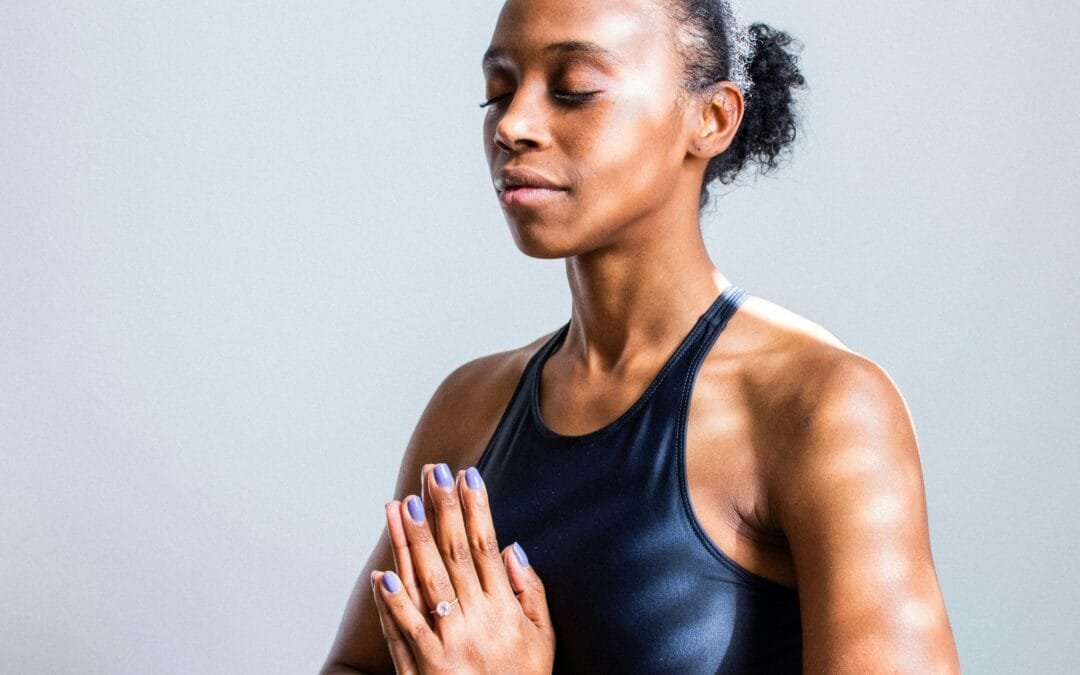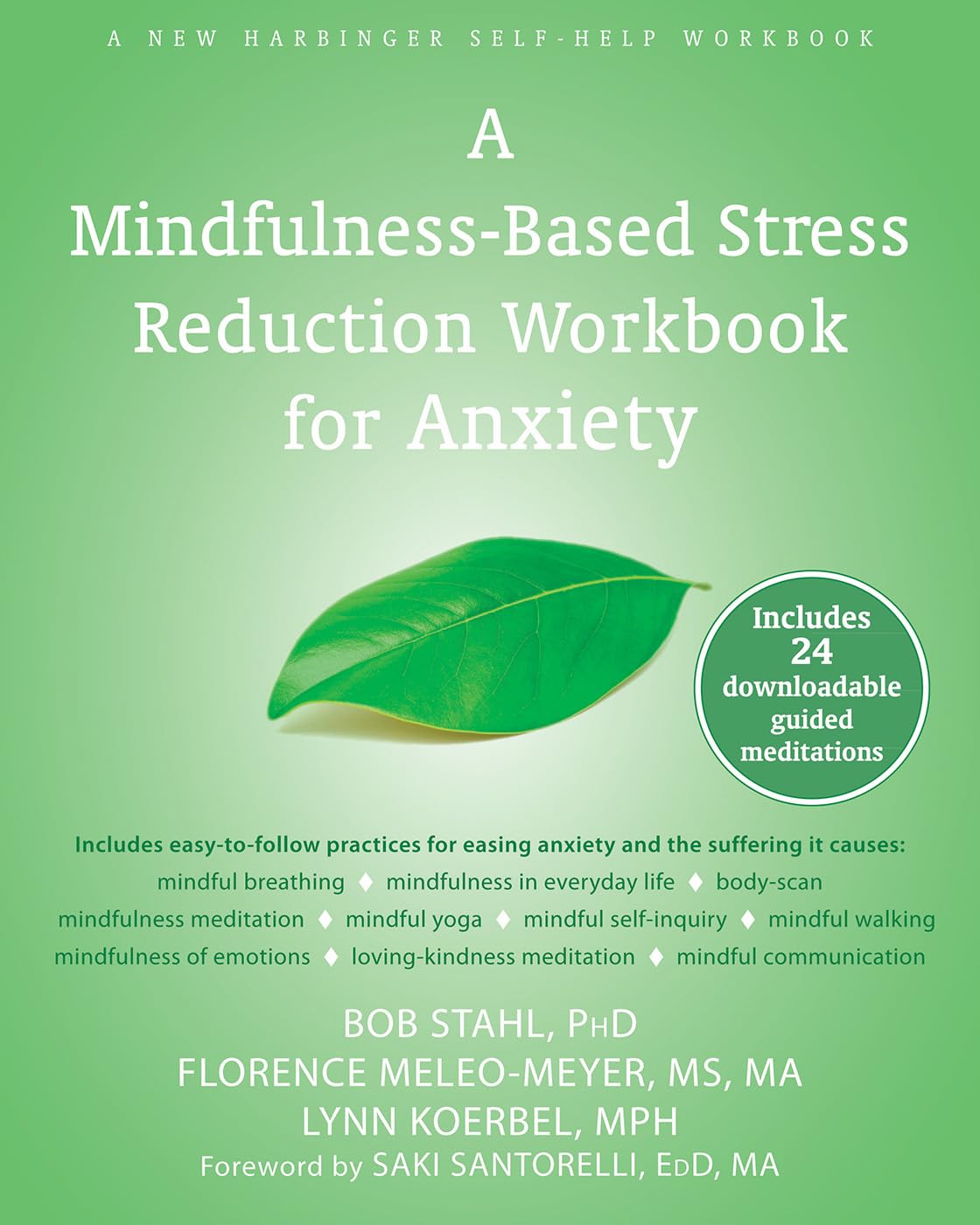Simple mindfulness exercises to reduce anxiety
Even the most basic chores can feel daunting when anxiety creeps up on us, squeezing our chest and rushing our thoughts. Our world is full of pressures that take up all of our time, leaving little time for rest and relaxation. But what if we were able to regain some authority? What if we could anchor ourselves in the here and now rather than letting our anxieties drag us around?
- 100 MINDFULNESS PROMPTS This unique inspirational and reflective mindfulness deck contains 50 DOUBLE SIDED CARDS designed for stress management, anxiety relief, self care, relaxation, equanimity, calmness, meditation, self love, wellness, mental fortitude, mood enhancement, positive psychology, emotional awareness, & more. A perfect way to treat yourself or any loved ones!
- 6 CATEGORIES FOR DAY & NIGHT As part of your morning routine, read a motivational quote and challenge to build the best version of your Self! At night, flip the card and read a powerful quote with a deep reflection question. Go beyond oracle decks and positive affirmations with diverse categories, like Mindfulness, Life, Emotions, Stoicism, Zen, and The Idea Space. Each category provides a varied experience aimed at bringing out your best Self!
- EYE-CATCHING DESIGN These attractive cards feature a design you can be proud to decorate your home and office with, or share as a gift. Keep these cards as decor in your bedroom for a gentle reminder to remain mindful when you wake up and go to bed. Is there a quote, challenge, or reflection you resonate with? Bring it with you throughout your day to draw continuous inspiration. If youd like, post it on social media, like Snapchat or Instagram, to inspire others!
- FIND CALM IN EVERY CARD Dive into mindfulness with our meditation cards. Perfect for gifting to your mom, girlfriend, grandma, daughter, son, wife, sister, husband, father, partner, kid, friend, or any other family member. Ideal for a birthday, wedding, anniversary, white elephant gift, births, school counselor supplies, stress therapy, teacher care package, Mother's Day, Valentine's Day, Christmas, Easter, Hanukkah, or any other holiday!
- PERFECT SELF THERAPY GIFT For any kids, teens, women, men, & any adult, our self care kit contains visually stunning cards that are large enough to not feel like regular playing cards, yet slender enough to take with you on the go. If you're stressed or anxious about a meeting, job interview, travel plan, moving, or any life event, then take these cards with you to keep you cool, calm, and collected.
To do that, mindfulness provides a potent yet easy method. The goal is to learn to manage anxiety more easily rather than completely eradicate it—let us face it, that is not possible. What is the best part? Hours of meditation or a retreat on a mountaintop are not necessary. You can easily incorporate these easy mindfulness activities into your daily routine.
Why Should You Practice Mindfulness for Anxiety Relief and Simple Mindfulness Exercises to Reduce Anxiety?
Have you ever seen how anxiety fuels both the past and the future? We dwell on past errors, fear future occurrences, or lose ourselves in “what-if” scenarios. We can escape that cycle by practicing mindfulness, which helps us return to the present.
By practicing mindfulness, you:
Break the cycle of anxious thoughts.
Develop a calmer response to stress.
Improve focus and emotional resilience.
Reduce the physical symptoms of anxiety (hello, relaxed shoulders and deeper breathing).
The key is consistency—small daily moments of mindfulness can create a noticeable shift over time.
What is Typically Done to Manage Anxiety?
Most people turn to traditional anxiety management techniques such as:
Medication: While helpful for some, medication doesn’t work for everyone and often comes with side effects.
Therapy: Cognitive Behavioral Therapy (CBT) is a great tool, but not always accessible or affordable for everyone.
Exercise & Diet Changes: Movement and proper nutrition can make a huge difference, but they require commitment and lifestyle adjustments.
While these methods have their place, mindfulness serves as a complementary, accessible, and zero-cost tool that can be practiced anytime, anywhere.
Simple Mindfulness Exercises to Reduce Anxiety
1. The 5-4-3-2-1 Grounding Technique
This technique is a lifesaver when anxiety makes your mind spiral. It helps bring immediate awareness to your surroundings, pulling you out of overwhelming thoughts.
How to do it:
Name 5 things you can see.
Name 4 things you can touch.
Name 3 things you can hear.
Name 2 things you can smell.
Name 1 thing you can taste.
This exercise shifts your focus away from anxious thoughts and anchors you in the present.
2. Box Breathing (Four-Square Breathing)
When anxiety tightens your chest, box breathing can quickly bring back a sense of calm.
How to do it:
Inhale deeply for 4 seconds.
Hold your breath for 4 seconds.
Exhale slowly for 4 seconds.
Hold your breath again for 4 seconds.
After a few rounds, feel your nervous system slow down and your body relax.
3. Mindful Walking
Walking can be more than just movement—it can be meditation in motion. Instead of walking mindlessly, use it as an opportunity to ground yourself.
How to do it:
Walk slowly and focus on each step.
Feel the ground beneath your feet.
Notice your breath and the rhythm of your movement.
Take in your surroundings’ sights, sounds, and scents.
Mindful walking is especially helpful if sitting still feels challenging.
4. The STOP Method
A quick mindfulness exercise you can do anywhere—at work, at home, or in a stressful moment.
S.T.O.P. stands for:
Stop what you’re doing.
Take a deep breath.
Take note of your inner thoughts, feelings, and sensations.
Proceed with a little more awareness.
This technique helps you step out of autopilot mode and respond more mindfully.
5. Mindful Eating
Eating in a rush or while distracted can contribute to anxiety. Slowing down and practicing mindful eating can bring a sense of peace.
How to do it:
Take a few deep breaths before eating.
Observe your food—colors, textures, and smells.
Eat slowly, savoring each bite.
Pay attention to the sensations in your body as you eat.
This practice not only reduces anxiety but also improves digestion and your relationship with food.
6. Body Scan Meditation
A great approach to relieve tension, especially right before bed.
How to do it:
Sit comfortable or lie down.
Close your eyes and take a few deep breaths.
Bring your attention to your toes. Notice any sensations—warmth, tingling, or tension.
Slowly move your focus upward, scanning your body part by part.
Release tension wherever you feel it.
A body scan helps connect you to the present and promotes deep relaxation.
7. Name Your Emotion
Often, anxiety feels overwhelming because we try to suppress it. Naming your emotion gives it less power over you.
How to do it:
When anxiety arises, pause and ask, “What am I feeling right now?”
Say, “I feel worried right now, and that is acceptable,” instead than trying to suppress it.
Notice how your body reacts to this acknowledgment.
Breathe deeply and let it pass.
When emotions are acknowledged instead of repressed, they are easier to manage.
The Benefits of Practicing Mindfulness for Anxiety
1. Reduces Overthinking
Overthinking can be decreased by practicing mindfulness, which helps you change your attention from ruminating to the here and now.
2. Improves Emotional Regulation
Instead of reacting impulsively to stress, mindfulness helps you respond calmly and thoughtfully.
3. Enhances Physical Relaxation
You can reduce heart rate and muscle tension by activating the parasympathetic nervous system by paying attention to your breath and body.
4. Increases Self-Awareness
Mindfulness enables you to respond to stress in a composed and deliberate manner rather than impulsively.
5. Can Be Practiced Anywhere
No equipment, no special training—just a willingness to be present.
Conclusion
You do not have to let anxiety rule your life. When used regularly, mindfulness is a potent technique that can provide comfort and serenity. Simple activities like grounding techniques, mindful walking, or quick breathing exercises can make a big difference.
- WHAT IT'S FOR: Daily guided breathing to help calm & focus your mind during the day or promote a peaceful night sleep, improving overall wellness. Continued practice can help manage or reduce stress & anxiety in all ages and can help improve symptoms of depression. A simple & fun meditation tool that can also cultivate mindfulness to help you live in the present moment.
- HOW TO USE IT 3 easy to use breathing modes OR as a calming night light. Simply follow fade-in, fade-out color prompts that simulate the popular 4/7/8 'calming breath', 5/5 'balance breath', or 4/4/4/4 'box breathing'. Green Buddha - Inhale , Purple Buddha Hold, Blue Buddha Exhale. Lightly tap on surface to adjust brightness.
- WHO ITS FOR adults & kids who might benefit from a gentle daily reminder to 'pause & reset'; visual learners who might prefer guided open-eyed meditation (those who find closing eyes harder to focus); beginning to advanced Meditation practitioners; those interested in Mindfulness; Teachers, Students & Counselors.
- WHERE TO USE IT - fits perfectly on desk or nightstand or wherever you might benefit from a reminder. Practice at home, work, school .. or as part of a relaxing wind down routine before bed.
- FEATURES - 2 Brightness Levels, Premium soft & squishy Silicone. 3.5x4x6 inches (lwh). Long battery life = 2 months @ 10 min/day. Auto shut off after 3 hrs. NOT INCLUDED Features: No Sound, No Moving Parts, App-Free Experience, No Manual Timer.
Just incorporate one or two mindfulness exercises into your daily schedule to get started. You will ultimately discover that you have more peaceful moments and that anxiety no longer dominates you as much.
Call to Action
Want to dive deeper into mindfulness and wellness? Check out more tips on Live-Better.net for practical strategies to enhance your well-being.




